Using Trains in Devon and Cornwall
-
Published
As we (eventually!) start to see some warm weather and as the school holidays approach, it’s time to start thinking about summer trips away. One of the most popular options is the South West! So, here’s our guide to using the trains in Devon and Cornwall, what they’re like and where you could visit.
Are there trains in Devon and Cornwall?
In a nutshell, yes! There’s actually quite an extensive rail network in Devon and Cornwall. You’ll find direct trains from as far afield as Edinburgh and Newcastle, as well as a frequent service from London. Once you’re there, you can take advantage of the impressive web of branch lines that connect to and from the main route between Exeter, Plymouth and Penzance. The vast majority of local trains in Devon and Cornwall are operated by Great Western Railway.
Using the train, you can explore Exmouth, Barnstaple, Torquay, Looe, Newquay, St Ives and more. Let’s take a look at how you can save money by getting to Devon and Cornwall in the first place!
How can I save money getting to Devon and Cornwall?
If you’re travelling from London, there are two ways to get to the Devon and Cornwall area. The most obvious one is to take a Great Western Railway service from London Paddington. However, you can also take a South Western Railway service from London Waterloo! Let’s compare the two.
Great Western Railway
You’ll find at least one train per hour from London Paddington to Exeter, Plymouth and beyond. For most hours of the day, there’s also a slower service which terminates at Exeter or Paignton. The fast services tend to take around two hours to reach Exeter, while the slower ones take around 2h30m. These trains have five, nine or 10 carriages:
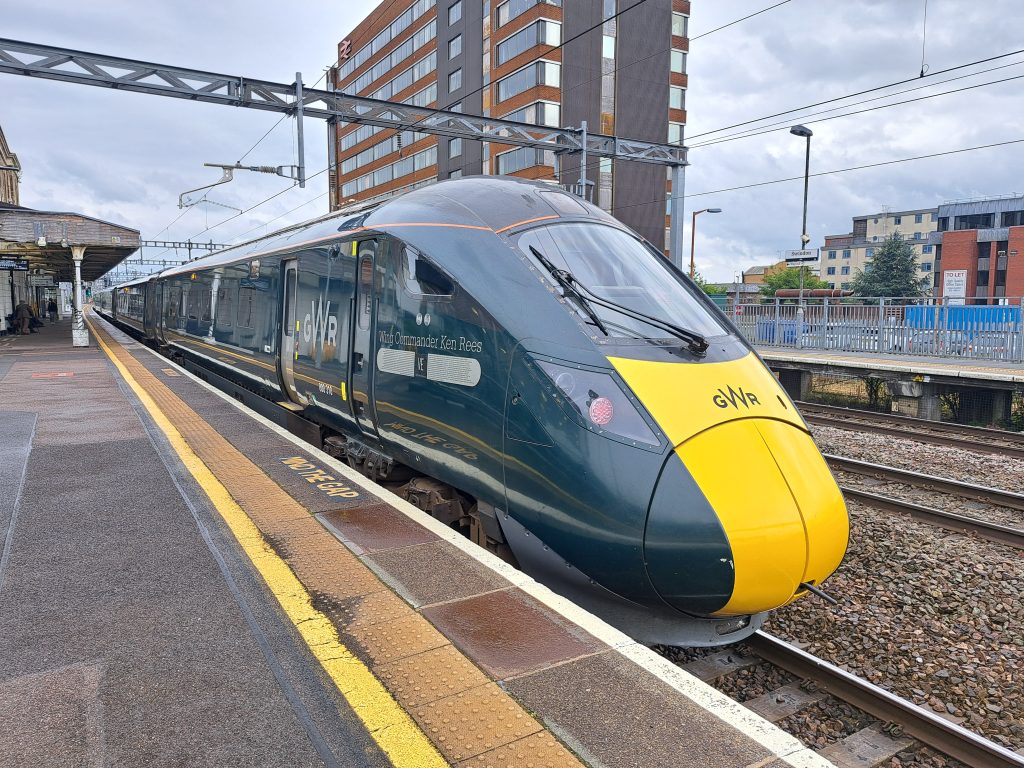
In Standard Class, you’ll find seating in a 2+2 layout. There’s a three-pin power socket under every seat. Seating is in a mix of airline-style and tables for four:
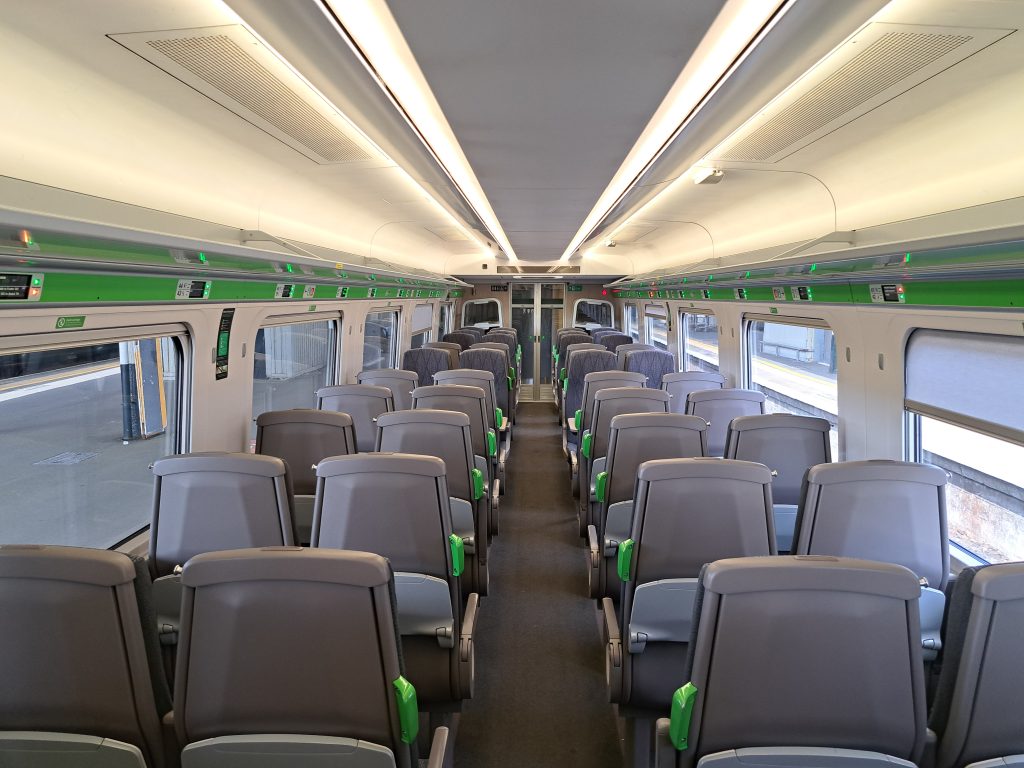
Legroom is generally good, though the seats are rather firm. We’d also recommend avoiding the seats at the far end of the carriage (by the doors) as some of them have no window, nor do they have a centre armrest, so you might end up getting rather cosy with your seat neighbour!
What about the price? Let’s take a look at a London to Exeter journey four weeks in advance:
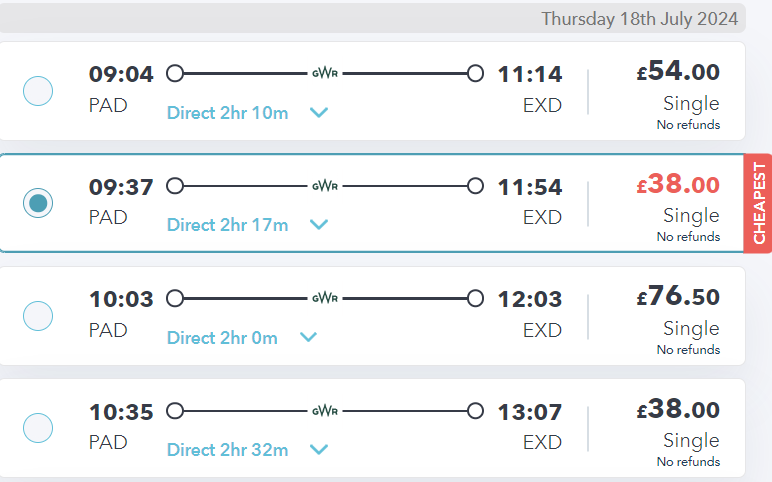
As you can see, your best bet is to aim for the slower trains which usually leave Paddington at around 35 minutes past the hour. The faster ones (bound for Plymouth and Penzance) tend to be quite a bit more expensive.
Looking for an upgrade? We’ve written about what you can expect in GWR First Class.
South Western Railway
Next, let’s take a look at South Western Railway. These trains leave from London Waterloo and take a slower route via Salisbury and Yeovil to reach Exeter. Typically, they take around 3h30m to complete the journey. Unlike Great Western Railway, they stop at Exeter Central, which is the most convenient station for the centre of Exeter, before continuing around the corner to Exeter St Davids.
These trains have three or six carriages that run all the way through from London to Exeter. However, it’s worth bearing in mind that they usually leave Waterloo with as many as nine carriages. The rear carriages will either terminate at Salisbury or continue to another destination, so make sure you’re towards the front of the train.
Seating is in a 2+2 layout, with a mix of airline-style seats and tables for four:

It’s worth remembering that there are no power sockets in Standard Class on these trains. The seats are more comfortable than on Great Western Railway, but legroom is a little tighter, particularly at the tables.
As for the price, let’s take a look at the cost from London Waterloo to Exeter, four weeks in advance:
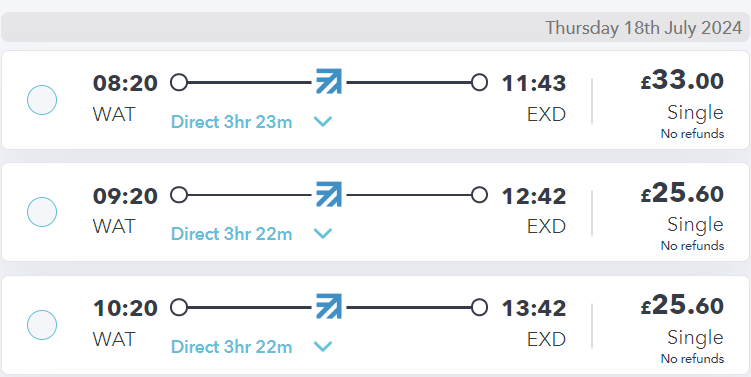
So, overall, it’s the consistently cheaper option. If you’re travelling on a budget, particularly at the last minute, then this is your best bet.
It’s also possible to book a First Class ticket on these trains. In exchange, you’ll get a bigger seat, more space to stretch out and a power socket. Make sure you bring a picnic though, as these trains don’t have any catering or trolley service.
Where can I go by train in Devon and Cornwall?
So, where can trains in Devon and Cornwall take you? The list is almost endless. Here are a few of our ideas that you might (or might not) have considered.
Dawlish
Even if you’re not stopping off here, many trains in Devon and Cornwall will pass by Dawlish and the sea wall on the way to Plymouth and beyond. Still, it’s very much worth stopping off to enjoy the views:
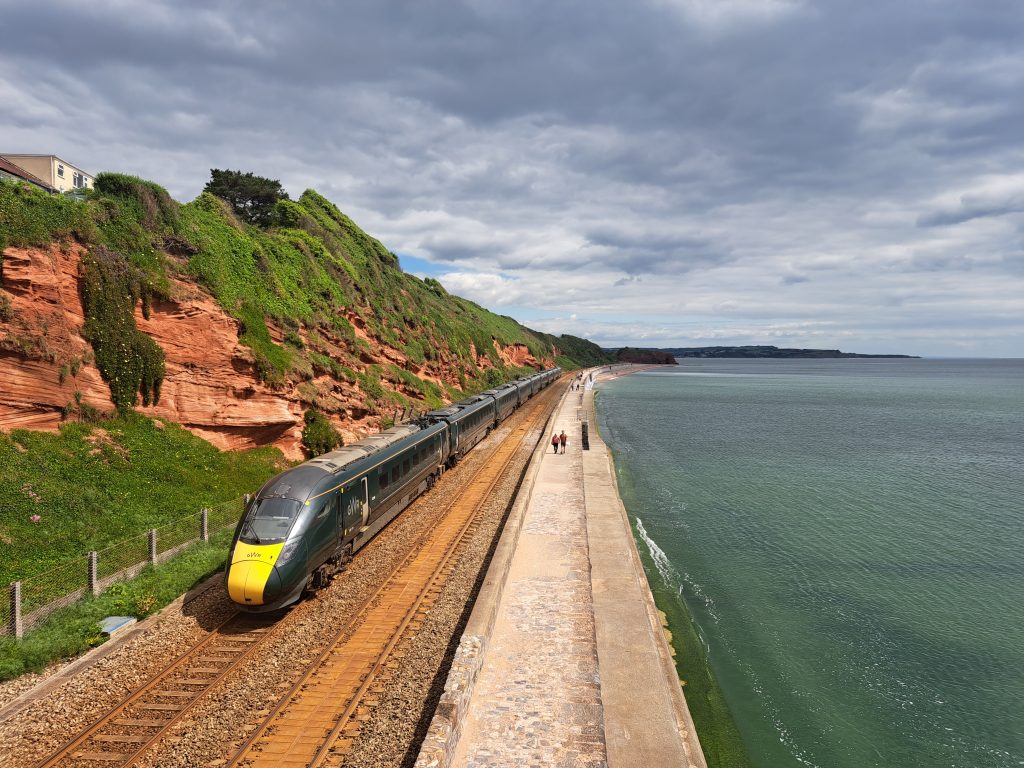
It’s possible to walk from Dawlish Warren to Dawlish along the length of the sea wall in around 40 minutes. It’s a great way to take in the beautiful sea views and get unusually close to the railway!
Trains serve Dawlish at least twice per hour on the Exmouth to Paignton route. One of these (per hour) stops at Dawlish Warren, too. Even if you’re not feeling like the walk, it’s a great idea to jump off at Dawlish, especially when the sun is out.
If you’re passing through on your way to Plymouth and beyond, make sure you sit on the left side of the train to see the sea.
Looe
Looe has it all. It’s a beautiful harbour town with narrow cobbled streets as well as a great stretch of beach. There’s no need to battle with car parking either, as it’s served by a dedicated branch line from Liskeard, where you can connect to/from trains elsewhere in Devon and Cornwall.
It’s the perfect place to wander and enjoy an authentic Cornish Pasty, too. What’s more, the journey itself is quite a quirky one! The railway gradually snakes its way out of Liskeard before switching directions and ambling along the beautiful East Looe River:

We’ve written more about the line here. Trains run around once per hour and leave from Platform 3 at Liskeard, which is a short walk from the rest of the station. We’d recommend leaving at least five minutes to change trains, and more if you have any mobility issues or have heavy luggage.
Lostwithiel
Welcome to the so-called Fairest of Small Cities! Lostwithiel was founded in the Norman era and it’s a true hidden gem. What’s more, it’s conveniently linked to the rest of Devon and Cornwall by train, as it’s on the main route from London to Penzance.
It’s a great place to get away from the hustle and bustle. As soon as you get off the train, you’ll be able to wander over the 14th Century bridge and take a breather by the River Fowey:
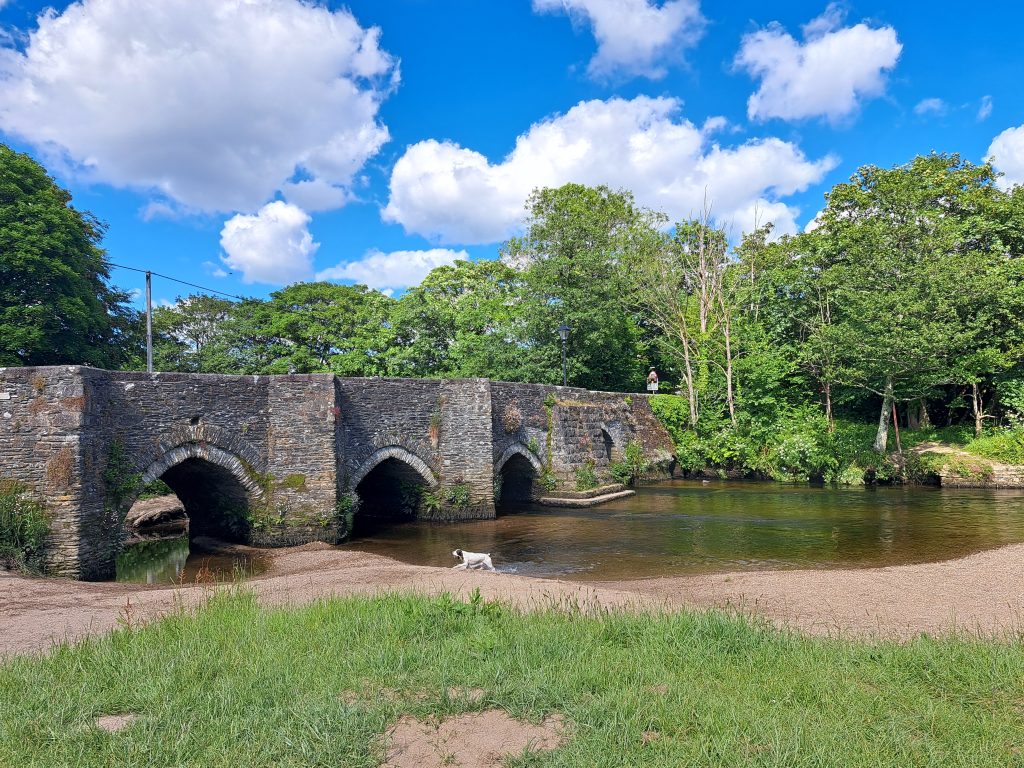
Looking for a bargain? Lostwithiel is also known as the Antiques Capital of Cornwall, so you can shop til you drop! It’s a town steeped in history, and one well worth a wander.
St Ives & Carbis Bay
When you think of Cornwall, you’re already thinking of St Ives. It’s the quintessential holiday destination, after all! Luckily, the train will take you straight there. In fact, it’s a terrible idea to try and drive there as the roads in St Ives are so narrow. Don’t worry though, it’s straightforward to let the train take the strain and bring you to these beautiful beaches:

If you want to take trains in Devon and Cornwall towards St Ives and Carbis Bay, then you’ll need to change at St Erth. For most of the day, this shuttle service runs every 30 minutes.
One thing to bear in mind is that if your connecting train is late, the St Ives train will not wait (unless it’s the last one, then it can likely be arranged). This is because the timetable is very tight, so there’s no opportunity for delays to be made up. If this happens, don’t worry. The train will be back soon. Plus, if you’re delayed, you might be able to claim compensation.
‘Unusual’ Stations
Here’s a bonus if you want to do something completely different! You can take trains in Devon and Cornwall to two rather unusual stations. So, what’s so strange about them?
Lympstone Commando
If you’ve ever been on a train that’s stopped at Lympstone Commando, you might have spotted this rather menacing sign on the platform:
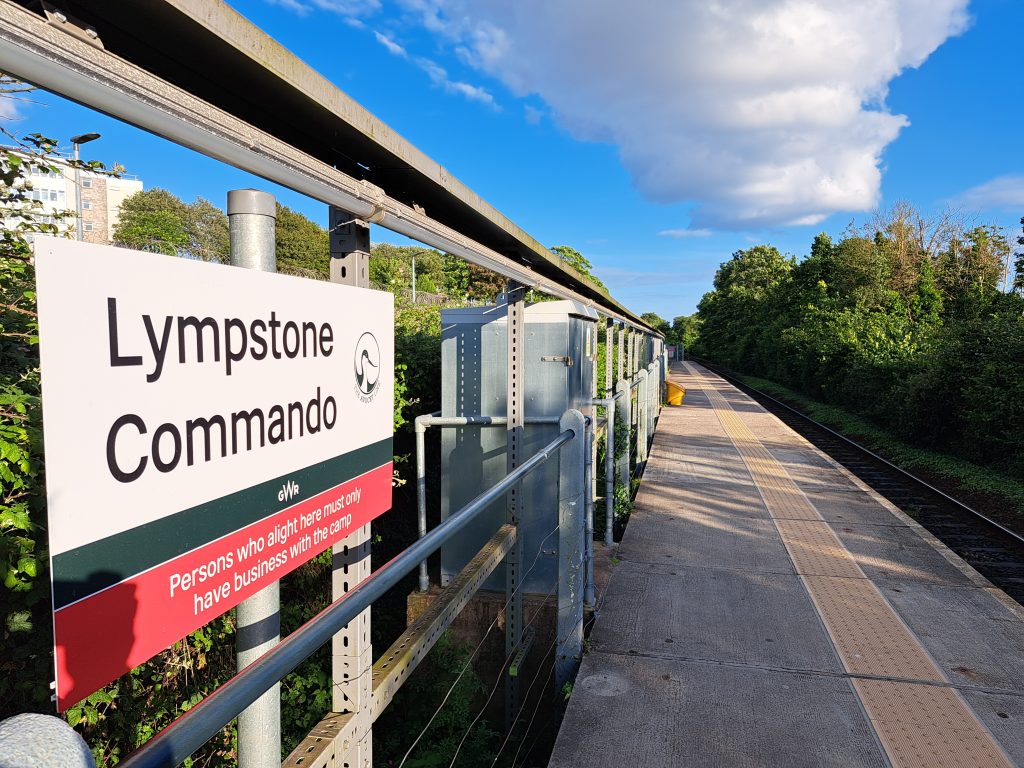
You see, the original purpose of Lympstone Commando was to serve the Marines’ training camp next door. Originally, this was all that you could access from the platform. So, if you didn’t have business with the camp, you were stuck at the station until the next train came along. These days though, there’s a cycle path which will take you along the estuary towards Exton and beyond:

It’s around a 10-minute walk to the next stop (Exton) along this path, so it’s easy to enjoy some beautiful views and tick off this unusual station. Just remember that it’s a request stop and is generally served once per hour.
If you’re getting off there, tell the conductor first. When you’re getting on, stick your arm out and flag the train down like you’d flag down a bus!
Coombe Junction Halt
This is the least-used station in Cornwall! It’s situated on the scenic Looe branch line, but very few trains serve the station itself. In fact, just four a day actually stop.
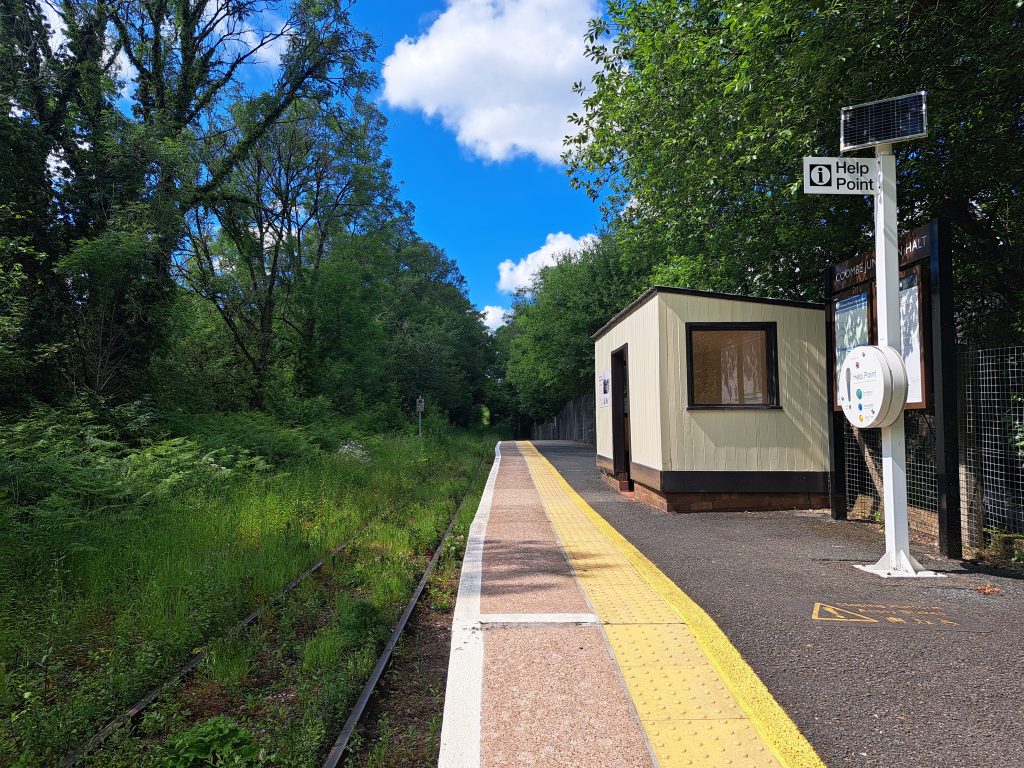
We’ve written a dedicated page about Coombe Junction Halt and the history behind this quirky little station.
What are the trains like?
As we mentioned earlier, almost all of the trains in Devon and Cornwall are operated by Great Western Railway. You’ll find a few different types of trains on their routes. Here are the main ones that you can expect to find:
Sprinter
Sprinter trains run on short, local routes, such as those to Looe and St Ives. They have two carriages, but they can be paired up to make a longer train:
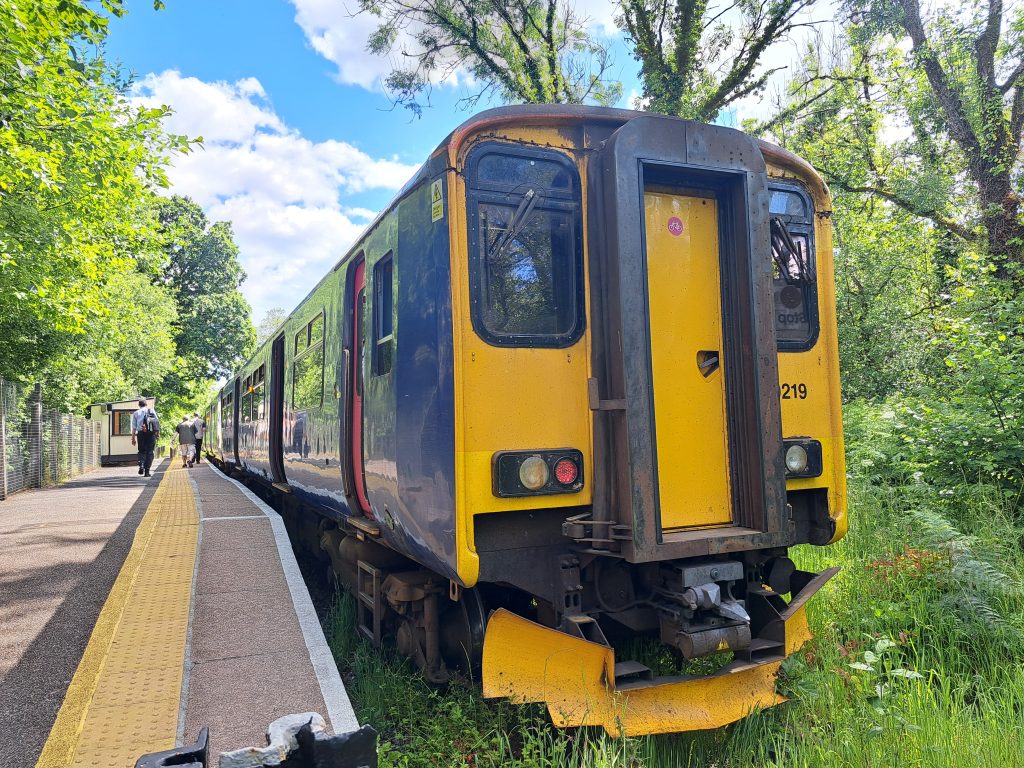
The vast majority of Sprinter trains have seats in a 2+2 layout. They have tables and power outlets, too. In fact, all Great Western Railway trains in Devon and Cornwall have power outlets, so you don’t have to worry about running out of charge!
Turbo
The Turbo trains run mostly on the route between Exmouth and Paignton. They have three carriages:
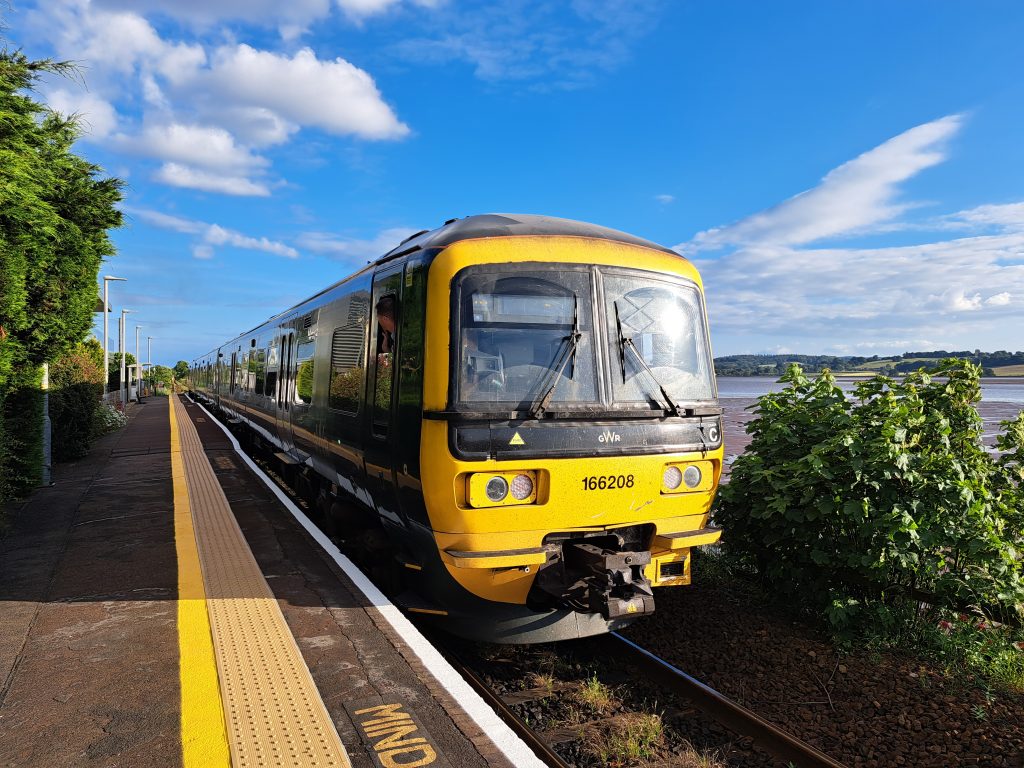
The seats are mostly in a 3+2 layout with small tables, as well as power outlets. However, our top tip is to aim for the areas behind the driver’s cabs. Back when these trains operated closer to London, these were the First Class areas. They aren’t First Class anymore, but the seating layout is exactly the same:
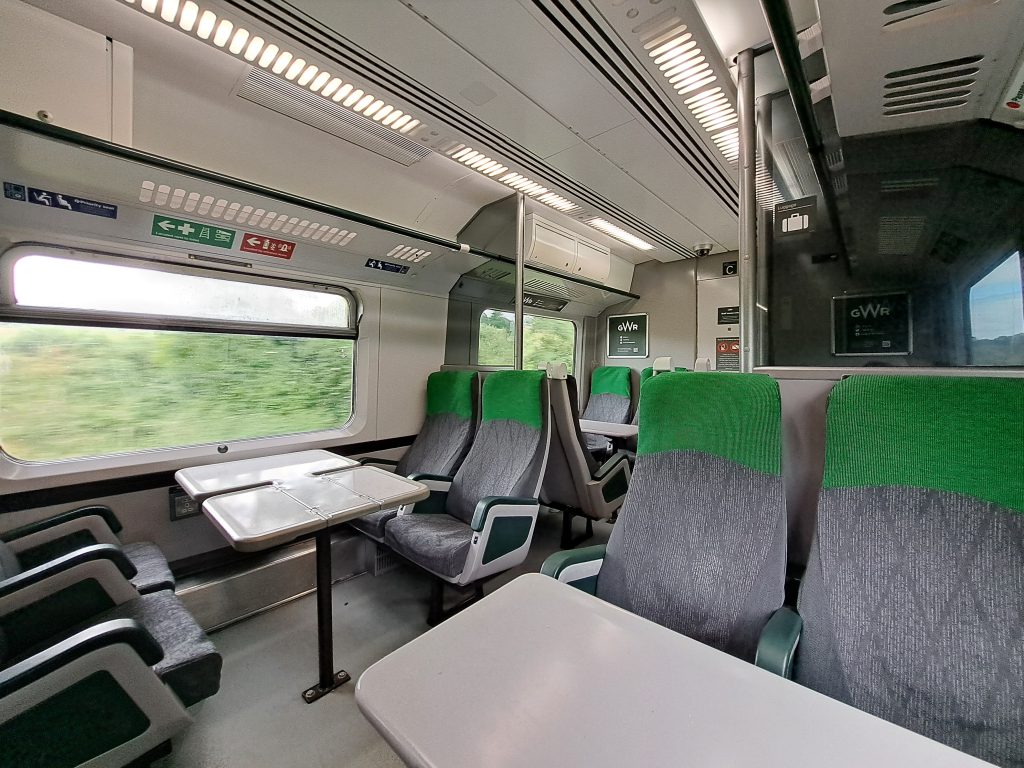
You’ll get a lot more space and a bigger seat. These seats are perfect if you’re travelling as a family, too.
‘Castle Class’ HST
Until around 2019, you’d find these trains (with more carriages) running on long-distance trains all the way from London to Cornwall. In 2024 though, they’ve been shortened to four carriages and they’re largely confined to stopping trains between Plymouth and Penzance:
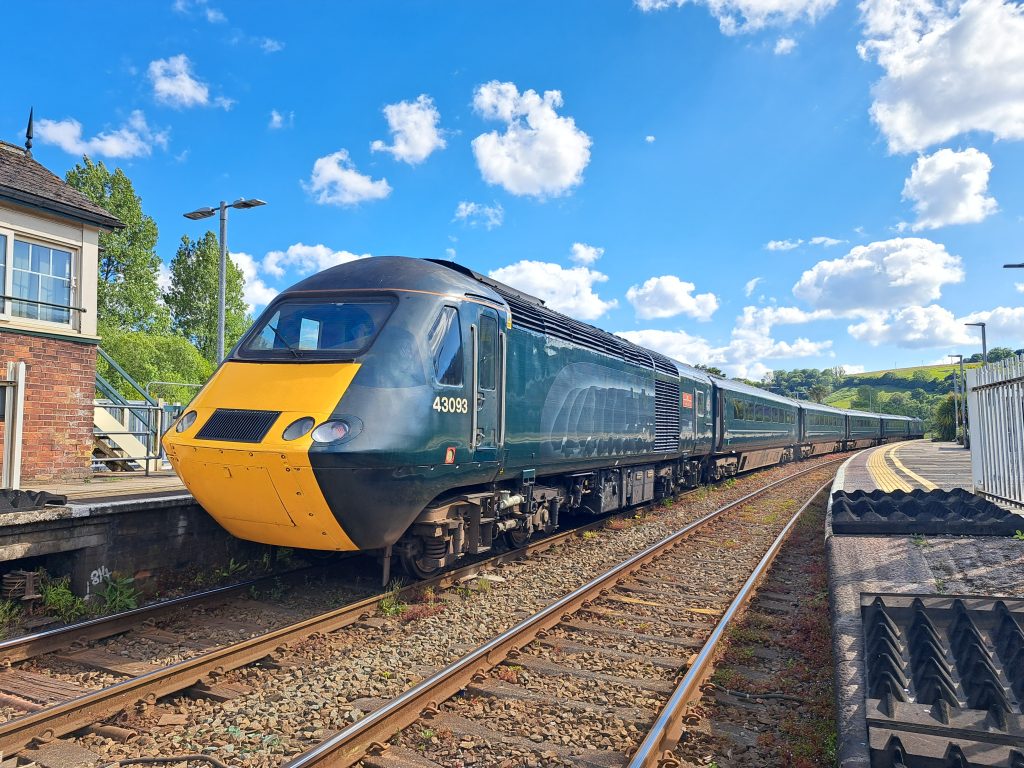
Their days are numbered, too, having been in service since the late seventies. On the inside, you’ll find 2+2 seating and power sockets, with a mix of airline-style and table seats.
Is there anything else I should know?
Ready to take trains in Devon and Cornwall to your favourite holiday destination? We’d recommend booking with Railsmartr. We don’t charge any refund or exchange fees, so you can enjoy peace of mind. If your ticket is refundable, you’ll get the whole lot back. Need to change when you’re travelling? No problem. You’ll only ever pay the difference in fare.
Don’t forget to check out our Instagram, too. We’ve got plenty more tips to help you travel smarter.
All fares and other prices, as well as times of trains, were issued on this page in good faith and were correct at the time of publication (19/06/24). Railsmartr is not responsible for any loss, inconvenience or otherwise, as a result of the information provided.
